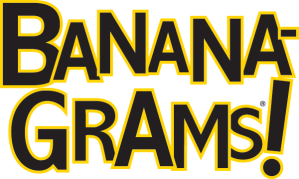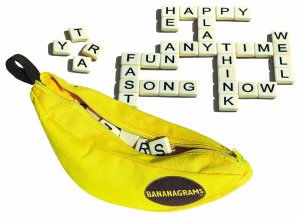
Wizards of the Coast (Photo credit: Wikipedia)
By Drew S.
About every four months a new Magic the Gathering card set is released. Around that time, I have people asking me what it takes to organize everything the store needs to do to have a successful release. I’ve decided to write a few posts chronicling what the store does every time a new card set is released.
Before I start, I’ll explain a little about what type of Magic the Gathering store Anime Kat is and why it matters. There are 3 different levels of stores:
At the Gateway Level, we could only do:
- Magic Leagues
- Host Casual events
Anime Kat is currently a Core level. At Core level, we can have:
- All Gateway content and benefits
- Friday Night Magic
- Magic Prereleases
- Magic Game Days
- Buy-a-Box promo cards
- Access to From the Vault product
- Same-day scheduling for both Casual and Rated events
For us to beget to our current level we had to:
- Report a minimum of 4 events
- Have a minimum of 30 unique people playing in your reported events
- Run and report a single event with 12 players or more
- Maintain a delinquency rate of less than 20% (be late submitting paperwork online less than 20% percent of the time)
- Introduce 6 new players to WPN events
Advanced Level is the highest level. At Advanced level, retail we get:
- All Gateway and Core content and benefits
- One additional event for all Core-level programs (i.e.: two FNMs each Friday instead of one)
- Access to Wizards Play Network Premium Tournaments
- Access to Magic Grand Prix Trials
- Access to Wizards Play Network Championship Qualifiers
- Access to additional From the Vault product
- Post-scheduling (Advanced-level retail locations can schedule both Casual and Rated events up to seven days after the event has taken place)
To qualify to participate as an Advanced retail location, your Anime Kat needs to (in the preceding 12 months):
- Report a minimum of 20 tournaments
- Maintain a delinquency rate of less than 10%
- Have a minimum of 100 unique people playing in your reported events
- Run and report a single tournament with 32 players or more
- Introduce 20 new players to WPN events
Now, why is Anime Kat’s level important? Well, it basically says what we can and can’t do. If we were not a Core Level, we would not be able to do Friday Night Magic. We also would be able to have official, or “sanctioned” events. Our store level also impacts how much products we can carry. Before each release of a new product (booster packs, fat packs, intro decks, event decks, etc…) we get what is called an allocation. The allocation is based on what level store we are, how long we have been part of the Wizards Play Network, how many players we typically have for events, and some other (magical?) levels that I don’t really understand. The allocation limits me on how much of a new product I can order for the store. For example, during for the release of Dragon’s Maze, I’ve been allocated 24 boxes of cards. That means for at least the first few weeks, I will only be able to sell 24 boxes of cards. If Anime Kat was an advance store, I would have a higher allocation. The allocations are actually a good thing. It makes so stores larger than ours don’t buy all of the products before I have a chance to order some.
I said that if we were an Advance Level store we could have more events and products. It would even be fairly easy to reach that level. We need one event with 32 players. We have already had 2 events with 31 players. But, I’m in no rush to jump to the next level. Why? One word: money.
I’ve already explained that there are allocations every time a new product comes out. I’m not required to buy my full allocation. I can only buy part of it if I want. For example, I am usually allocated 3 or 4 cases of Intro Decks. However, I know that those do not sell well so I typically only buy 1. However, for some releases (like boosters) there are incentives to buy the full allocation. I receive free shipping on my order by buying my full allocation of booster boxes. Anyone who has several binders of cards knows how much they weigh and can recognize the savings of free shipping. More importantly, if I buy my full allocation from my distributor (the company I actually buy my cards from-Magazine Exchange) will provide prizes for my store. A large portion of the prizes for our prerelease events are provided to me for free. This allows me to give out even more prizes than I would be able to otherwise. As you can see, I try to get the full allocation.
However, buying the full allocation is expensive. The combined cost of products for the prerelease and release of a new set is about $3,000-$4,000. Obviously, I don’t sell all of the booster boxes the day they come out. It typically takes about a month to sell all of them. In retail, products are not worth anything until they are sold. Unsold products cost stores money.
What does this have to do with being an Advance Level store? If Anime Kat was an Advance Level store, we would have a larger allocation. One of two things would happen. One: I would not order the full allocation, because I know the stack of booster boxes would be behind the counter for a couple months. However, I would not get free shipping, and I would have fewer prizes to give out. Two: I would order our full allocation. The extra booster boxes would sit under that counter for a couple of months (because I can’t sell them fast enough) and the money spent on them would not be able to go to stocking other or new products (anime, manga, Warhammer 40K, etc…).
Currently, we are not selling booster packs fast enough to push us to Advance Level store. However, I know that we will be one day.
Check the blog in a few days for the next part of “From Wizards of the Coast to Anime Kat to You” where I discuss what needs to be done before the cards even arrive at the store.










































